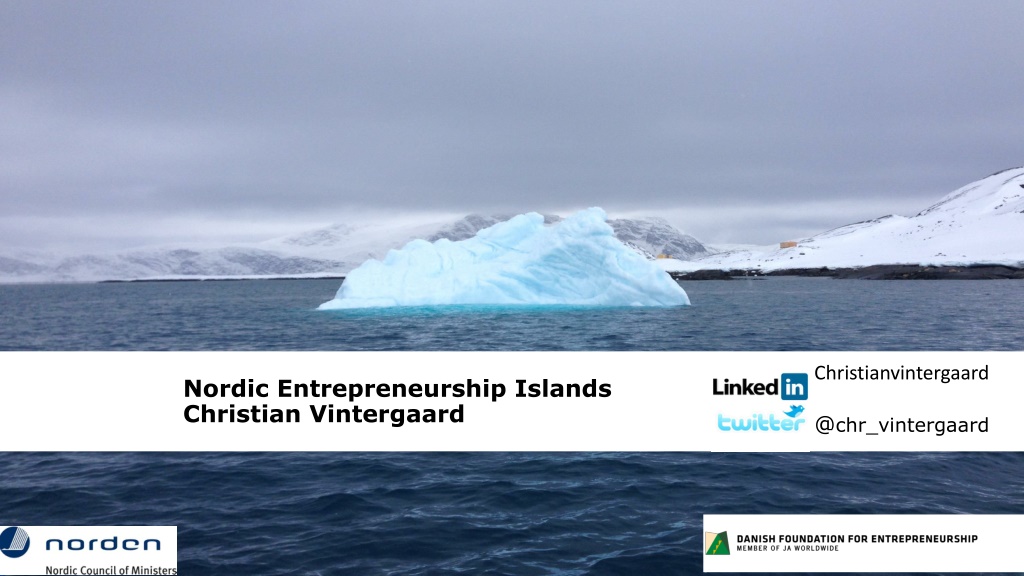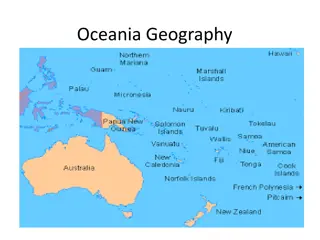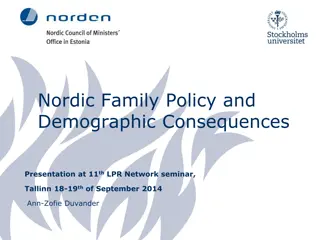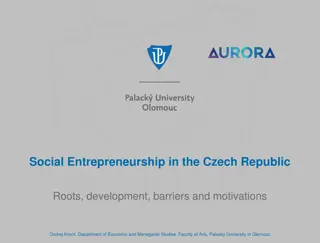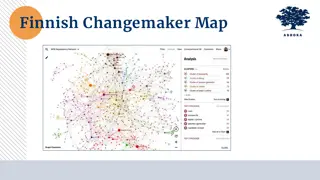Nordic Entrepreneurship Islands Project
The Nordic Entrepreneurship Islands Project aims to address challenges like depopulation and youth unemployment by promoting entrepreneurship education and supporting student-run start-ups. Through regional and national initiatives, the project seeks to boost the number of new entrepreneurs across 7 selected Nordic islands. By analyzing existing models and resources, the project aims to estimate the potential impact on entrepreneurial competences and student start-ups over a 5-year horizon."
Download Presentation

Please find below an Image/Link to download the presentation.
The content on the website is provided AS IS for your information and personal use only. It may not be sold, licensed, or shared on other websites without obtaining consent from the author.If you encounter any issues during the download, it is possible that the publisher has removed the file from their server.
You are allowed to download the files provided on this website for personal or commercial use, subject to the condition that they are used lawfully. All files are the property of their respective owners.
The content on the website is provided AS IS for your information and personal use only. It may not be sold, licensed, or shared on other websites without obtaining consent from the author.
E N D
Presentation Transcript
Christianvintergaard Nordic Entrepreneurship Islands Christian Vintergaard @chr_vintergaard
The Nordic Entrepreneurship Island project Nordic Entrepreneurship Islands is a pre-project in 7 selected Nordic islands with the purpose to: Map and analyse the spread of entrepreneurship education in upper secondary and higher education. Ensure one newly established student business is supported through a micro grant. Analyse the development opportunities and resources for start-ups initiated by students Estimate the expected penetration rate of entrepreneurship education and student start-ups during a 5 year time horizon. The project is based on experience, models, programmes, materials etc. that already exist in the Nordic countries.
The Nordic Entrepreneurship Island project A pilot-project in 7 selected Nordic islands The project addresses: The demographic, educational and new business venture challenges on the islands. The opportunities and potentials arising from an increased focus on entrepreneurship education and start- up capital for student start-ups on the islands The expected penetration rate of entrepreneurship education and student start-ups during a 5 year time horizon.
Challenges Depopulation & youth unemployment Most of the Nordic islands in the project are suffering from depopulation - especially young people who have high career aspirations and wishes for a higher education. The Nordic islands also suffer from youth unemployment which in most islands is 2 or 3 times as high as overall unemployment. Few jobs Nordic islands are challenged by having too few jobs, and the companies that disappear are not replaced by new entrepreneurial businesses. In the Faroe Islands many young people go abroad to study and about half of them never return, presumably because there is a lack of knowledge-intensive workplaces in the Faroe Islands. Existing jobs are replaced by new technologies, new demands etc. Entrepreneurs & entrepreneurship education Generally, entrepreneurs and innovative employees are missing. There is currently no widespread entrepreneurship development in the North. The education system trains the young people to the present (and past jobs) and makes them seek a higher education.
Possibilities The number of new entrepreneurs can be influenced by regional and national initiatives. Entrepreneurs are very immobile "people" (Source: The Danish Business Authority). Entrepreneurship can be affected (relatively cheaply) through education and microfinance to student-run start-ups. There is evidence that an effort to enhance entrepreneurial competences among young students has a great effect on: Competence / dissemination. The number of student start-ups
Data collection Macro level National strategy Meso level Educational institution strategy Micro level Upper secondary education and VET Tertiary educations course descriptions and Stjernemodel Cases
General conclusions for all islands The analysis No / limited prior data available for mapping entrepreneurship in the educational sector The definition of entrepreneurship education is defined by The Danish Foundation for Entrepreneurship Findings: Transportation is a big issue Limited implementation of entrepreneurship education Only very few student entrepreneurs Industrial change from living of the land / sea Awareness of the present challenges Resourceful people No / limited resources for entrepreneurship education No / limited resources for student entrepreneurs No / limited resources for entrepreneurship teachers National and regional strategies have huge impact Great potential on each island
General conclusions for all islands The development of the penetration rate for entrepreneurship education develops according to an S-curve. 100 % Penetration 0 % Time
General national recommendations National strategies for entrepreneurship education are important a cross-ministerial collaboration A national operator/ responsible organisation is important Strong stakeholder relations Dedicated budget for development and activities Do not underestimate data for development in penetration Later: impact studies also become important Entrepreneurship in higher education is the most effective way to foster long-run student start-ups. Support and collaborate with schools on all levels There are only few EE activities for teachers Focus on teacher training from the start EE as a job creator (start-up organisations, incubators) Promote EE The Micro Grants do have an effect, but one should expect a slow start Synergies across the Islands can be great
Mapping of the islands Danish Foundation for Entrepreneurship Thanks!
Christianvintergaard Nordic Entrepreneurship Islands Christian Vintergaard @chr_vintergaard
